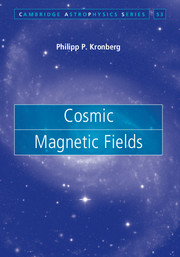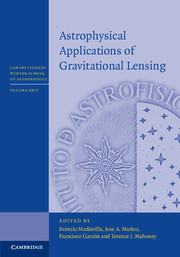Refine listing
Actions for selected content:
17002 results
Exercises for Part IV
- from Part IV - Turbulence
-
- Book:
- Introduction to Modern Magnetohydrodynamics
- Published online:
- 13 October 2016
- Print publication:
- 06 October 2016, pp 241-242
-
- Chapter
- Export citation
Dedication
-
- Book:
- Introduction to Modern Magnetohydrodynamics
- Published online:
- 13 October 2016
- Print publication:
- 06 October 2016, pp v-vi
-
- Chapter
- Export citation
Introduction
-
- Book:
- Deconstructing Cosmology
- Published online:
- 12 October 2016
- Print publication:
- 29 September 2016, pp 1-5
-
- Chapter
- Export citation
7 - Dark Matter
-
- Book:
- Deconstructing Cosmology
- Published online:
- 12 October 2016
- Print publication:
- 29 September 2016, pp 77-95
-
- Chapter
- Export citation
1 - Creation Mythology
-
- Book:
- Deconstructing Cosmology
- Published online:
- 12 October 2016
- Print publication:
- 29 September 2016, pp 6-11
-
- Chapter
- Export citation
8 - MOND
-
- Book:
- Deconstructing Cosmology
- Published online:
- 12 October 2016
- Print publication:
- 29 September 2016, pp 96-114
-
- Chapter
- Export citation
9 - Dark Matter, MOND and Cosmology
-
- Book:
- Deconstructing Cosmology
- Published online:
- 12 October 2016
- Print publication:
- 29 September 2016, pp 115-125
-
- Chapter
- Export citation
4 - Precision Cosmology
-
- Book:
- Deconstructing Cosmology
- Published online:
- 12 October 2016
- Print publication:
- 29 September 2016, pp 37-48
-
- Chapter
- Export citation
6 - Dark Energy
-
- Book:
- Deconstructing Cosmology
- Published online:
- 12 October 2016
- Print publication:
- 29 September 2016, pp 66-76
-
- Chapter
- Export citation
Notes
-
- Book:
- Deconstructing Cosmology
- Published online:
- 12 October 2016
- Print publication:
- 29 September 2016, pp 130-140
-
- Chapter
- Export citation
Index
-
- Book:
- Deconstructing Cosmology
- Published online:
- 12 October 2016
- Print publication:
- 29 September 2016, pp 141-144
-
- Chapter
- Export citation
Frontmatter
-
- Book:
- Deconstructing Cosmology
- Published online:
- 12 October 2016
- Print publication:
- 29 September 2016, pp i-iv
-
- Chapter
- Export citation
10 - Plato's Cave Revisited
-
- Book:
- Deconstructing Cosmology
- Published online:
- 12 October 2016
- Print publication:
- 29 September 2016, pp 126-129
-
- Chapter
- Export citation
Contents
-
- Book:
- Deconstructing Cosmology
- Published online:
- 12 October 2016
- Print publication:
- 29 September 2016, pp v-vi
-
- Chapter
- Export citation
Acknowledgments
-
- Book:
- Deconstructing Cosmology
- Published online:
- 12 October 2016
- Print publication:
- 29 September 2016, pp vii-viii
-
- Chapter
- Export citation
5 - The Concordance Model
-
- Book:
- Deconstructing Cosmology
- Published online:
- 12 October 2016
- Print publication:
- 29 September 2016, pp 49-65
-
- Chapter
- Export citation
2 - Three Predictions of Physical Cosmology
-
- Book:
- Deconstructing Cosmology
- Published online:
- 12 October 2016
- Print publication:
- 29 September 2016, pp 12-27
-
- Chapter
- Export citation
3 - The Very Early Universe: Inflation
-
- Book:
- Deconstructing Cosmology
- Published online:
- 12 October 2016
- Print publication:
- 29 September 2016, pp 28-36
-
- Chapter
- Export citation

Cosmic Magnetic Fields
-
- Published online:
- 22 September 2016
- Print publication:
- 13 October 2016

Astrophysical Applications of Gravitational Lensing
-
- Published online:
- 05 September 2016
- Print publication:
- 06 October 2016
